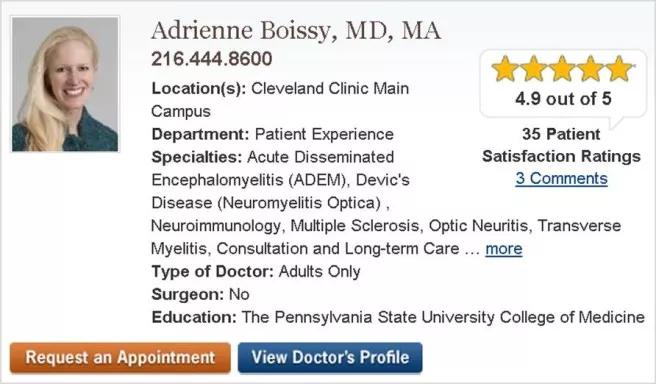Improving transparency and accountability in healthcare

Imagine you need to buy a new washing machine. How do you start? If you’re anything like me, you go straight to the Internet and look up the customer reviews. Most big retailers post aggregate customer ratings of one to five stars to help you make the best choice. Online comparison shopping has revolutionized commerce and given consumers unprecedented power of choice.
Advertisement
Cleveland Clinic is a non-profit academic medical center. Advertising on our site helps support our mission. We do not endorse non-Cleveland Clinic products or services. Policy
Now something similar is coming to healthcare. Cleveland Clinic recently began posting patient ratings of individual doctors on its website, along with comments from patient surveys. Doctors are rated from one to five stars, and the comments are filtered only for obscenity, irrelevance or potential libel. It’s controversial — especially among doctors. But we believe it’s a necessary step to improve transparency and accountability in healthcare.
What do the doctor ratings look like? Let’s look at my physician profile on Cleveland Clinic’s website. It includes comprehensive professional information, a brief biography, and industry relationships. Right below my picture is the patient rating – five stars, based on 35 patient satisfaction surveys. There is a link to patient comments — three as of this writing. All of them pretty good.

Adrienne Boissy’s 5-star rating
Patients do not directly enter their ratings and comments, as they would on Amazon or other retail sites. The ratings and comments are those of patients who have been randomly invited to take a detailed patient survey after their Cleveland Clinic visit. About 190,000 patients a year accept the invitation. The survey and its results are administered by an independent company to assure objectivity.
To arrive at the star ratings, patients are asked to give their doctor a score of one to five, based on whether the doctor:
Advertisement
The six factors are averaged to generate a one to five-star rating. Patients who take the survey are also invited to offer their written comments. The written comments go up on the website — whether they are positive, negative or indifferent. The commentators’ names are omitted, along with any information that might compromise patient confidentiality.
The doctor rating system only went online in April, 2015. It’s still a work in progress.
Big data works best when there are a great many data points. Most doctor rating sites are useless because they are based on only a handful of unverified patient inputs.
Cleveland Clinic will not post a rating until the doctor has accumulated at least 30 survey responses from actual patients. With more and more surveys coming in every day, our doctor ratings will eventually reflect hundreds of thousands of patient responses, with old responses continually dropping off and new ones coming on.
Transparency is risky. Not all doctors are happy about it. But online ratings are causing us all to focus even more intently on patient satisfaction. Cleveland Clinic is the first major academic medical center to take the online ratings plunge. You can be sure that many others will follow.
Adrienne Boissy, MD, MA, is Chief Experience Officer at Cleveland Clinic.
Advertisement
Advertisement

Essential prescribing tips for patients with sulfonamide allergies

OMT may be right for some with Graves’ eye disease

ATHOS-3 subgroup analyses reveal compelling benefits

Cultural differences, literacy rates hurt adherence

Care improves quality of life

New developments

A review for primary care providers, geriatricians

Not if they meet at least one criterion for presumptive evidence of immunity